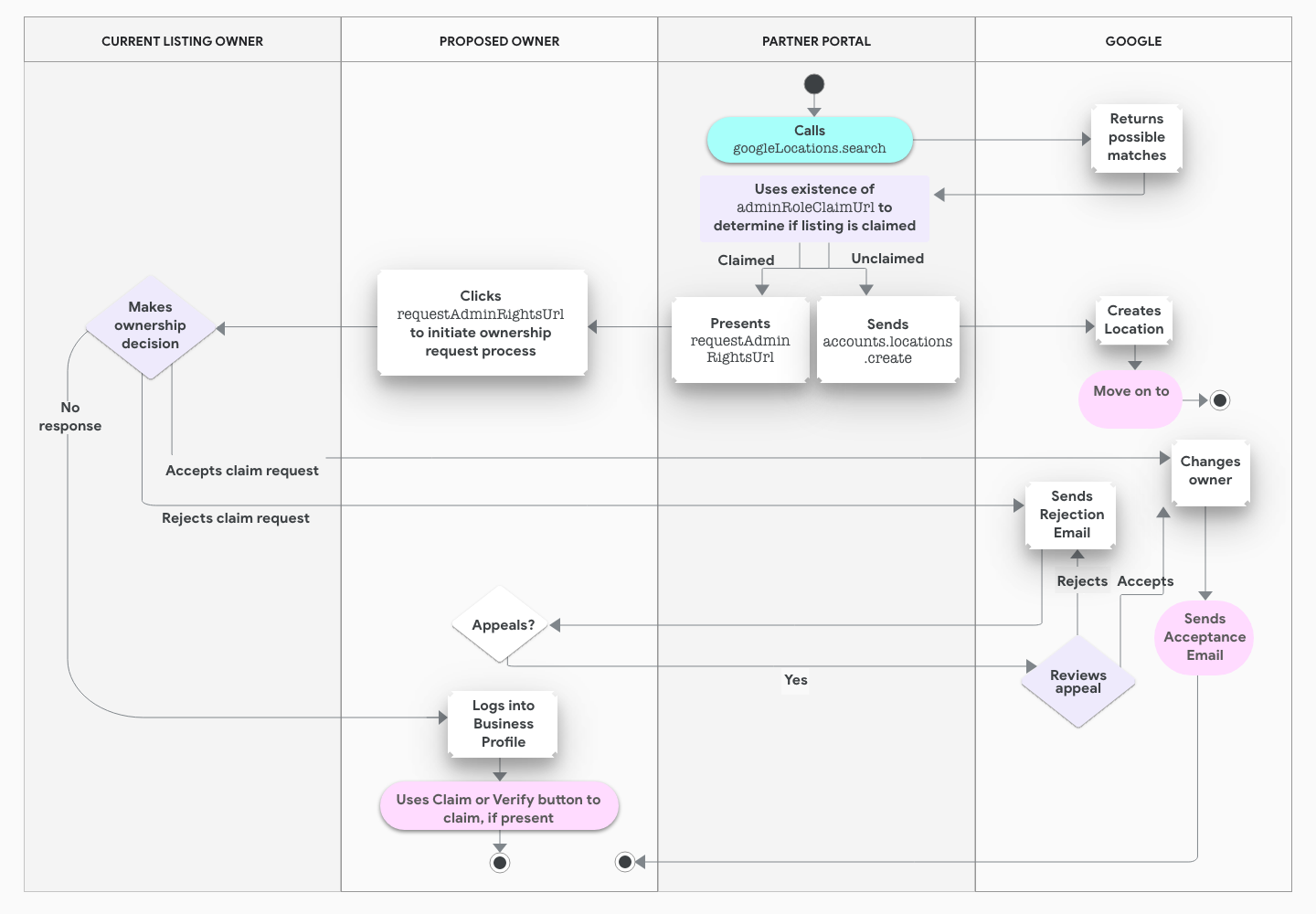Com a API GoogleLocations, é possível saber com antecedência se um local foi reivindicado no Perfil da empresa. Assim, se ele tiver sido reivindicado, você poderá pedir acesso imediatamente. Além disso, se você gerencia contas verificadas em massa, pode selecionar com antecedência possíveis correspondências com mais precisão e evitar a criação de locais duplicados.
O endpoint da API retorna um URL que indica se um local já foi reivindicado. Se sim, você poderá usar esse mesmo URL para pedir acesso.
Veja na imagem a seguir uma visão geral do processo para solicitar a propriedade de um local.

Para usar a API GoogleLocations, siga estas etapas:
- Colete os dados de local do comerciante.
-
Chame o endpoint
googleLocations.search. Adicione os dados de local ao corpo da chamada. Você também pode incluí-los em uma string de consulta semelhante àquela que um usuário digita na Pesquisa Google ou no Maps. Por exemplo, "Starbucks Avenida Paulista SP".A API retorna uma lista de locais possivelmente correspondentes e informações sobre cada local, como
locationNamee endereço. - Selecione a opção que corresponde ao seu local. Se não houver correspondências, chame
accounts.locations.createe pule para a etapa 5. -
Analise o estado de
requestAdminRightsUrlna resposta e faça o seguinte:- Se
requestAdminRightsUrlestiver presente, então outro usuário é o proprietário da ficha da empresa. Direcione o comerciante para o URL e peça acesso e propriedade do local no Perfil da empresa. - Se
requestAdminRightsUrlnão existir, chameaccounts.locations.createe crie uma nova ficha a ser verificada depois.
- Se
- Se você criou novas fichas de empresa como parte desse processo, inicie a verificação delas usando as APIs correspondentes. Para mais informações, consulte Gerenciar verificação.